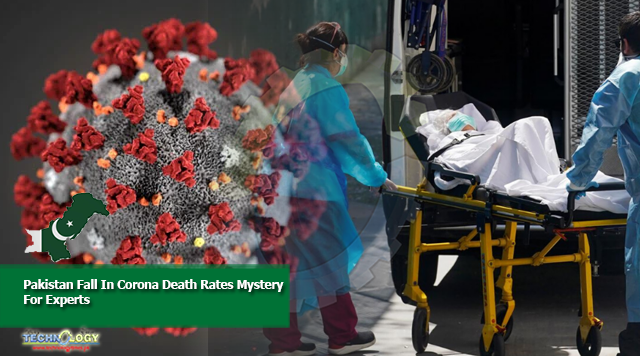The fall in recorded cases was at first met with widespread scepticism because it coincided with a fall in testing. International officials complained the reduction in tests meant it was impossible to track the spread, while opposition parties accused the government of fiddling testing rates to deliberately hide the prevalence of the disease.

Two months after Pakistan appeared headed for a sky-rocketing COVID-19 outbreak, case numbers and death tolls have fallen in what doctors say is a welcome, but puzzling drop in the disease. While neighbouring India has raced up the world ranking for countries badly hit by the new coronavirus, Pakistan is heading in the other direction, British media reported on Friday.
A young population, robust immune systems and a system of localised “smart” lockdowns have all been touted as reasons for the fall, but health officials admit the reasons remain unclear.
“One ought to have a little humility in this,” said Dr Faisal Sultan, an infectious diseases expert who worked as Prime Minister Imran Khan’s adviser for COVID-19.
“There are always great unknowns in science and epidemiology and complex social sciences and interactions. If anyone says they really know a final answer, they are wrong.”
The fall in recorded cases was at first met with widespread scepticism because it coincided with a fall in testing. International officials complained the reduction in tests meant it was impossible to track the spread, while opposition parties accused the government of fiddling testing rates to deliberately hide the prevalence of the disease.
There was also concern that stigma from the disease and the prospect of enforced quarantine made potential patients reluctant to come forward for testing.
Pakistan is still only testing around 0.1 people per thousand, compared to six times that in India. Yet other measures, including the proportion of tests registering positive as well as hospital admissions have also fallen.
“The situation now is not like June where we knew if testing was more, we could have recorded more cases,” said one international official helping the response in Pakistan.
“Now, the positivity rate at the same rate of testing is much much lower confirming a very reduced rate of transmission.
“We have a bit of an unexplained situation,” the official said.
Pakistan’s official toll is thought to be a significant overall undercount, and some sick may still be avoiding hospitals, but the downward trend still appeared genuine, officials said.
Dr Faisal Mahmood, an associate professor of infectious diseases at the Aga Khan University, said he thought the fall in cases was real, “but the reasons for this are not terribly clear at this point”.
“I think it’s a little bit of many things. Part of it is we are just lucky and the age distribution of the country is such that we were expected to have as many severe cases as you would expect in say the US, or Italy or the UK.”
Pakistan may have benefited from its outbreak getting going later, when hard lessons on how to treat patients and save lives had already been learned, he said.
The surge in cases after May’s Eid celebrations may also have saturated small, mobile super-spreading groups that were then unable to infect others as they recovered and gained immunity.
Dr Sultan said the decision to join up the different provincial responses into a national coordination centre set up with extensive military help, may have made the difference. The set-up allowed officials to get accurate data from the provinces and then act on it, he said.
The PTI government has also hailed its smart-lockdown system of localised shutdowns which avoided a lengthy national hibernation. Neighbourhoods were supposed to be sealed up when cases rose above a certain level. But here too, their effect is unclear. There were widespread reports of people able to move freely in and out of supposedly sealed areas.
Dr Sultan said despite the promising signs, he remained cautious.
“At the end of the day I keep reminding people that this is like smouldering embers and the embers are there. You provide them with fuel and with a little bit of oxygen, they will flare up,” he said.
Originally published at The news international